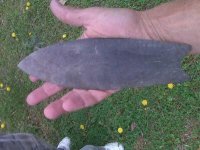shorelinesearcher
Jr. Member
Saw this yesterday in the Murray Ledger & Times. Thought you guys would like to see this if you haven't already.
http://www.murrayledger.com/articles/2010/06/20/top_story/news01.txt
Any thoughts about authenticity?
mike
http://www.murrayledger.com/articles/2010/06/20/top_story/news01.txt
Any thoughts about authenticity?
mike
Amazon Forum Fav 👍
Upvote
0





